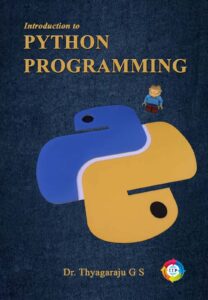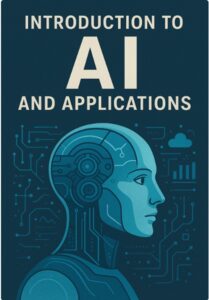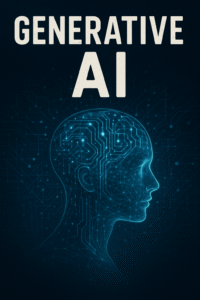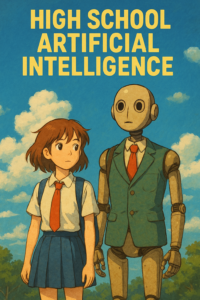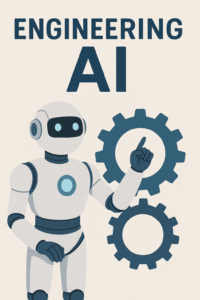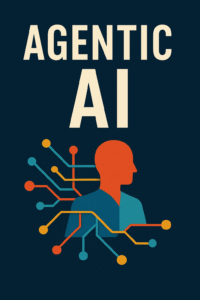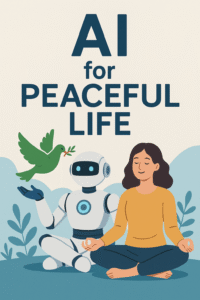Introduction: The Dawning of a New Educational Epoch
The traditional classroom setup—students seated at desks while a teacher delivers lectures using a blackboard—is rapidly becoming obsolete. Artificial Intelligence (AI) is not just a technological advancement; it’s a transformative force reshaping India’s higher education landscape. Dr. Abhay Jere, Vice Chairman of the All India Council for Technical Education (AICTE) and Chief Innovation Officer at the Ministry of HRD, emphasizes that AI is becoming foundational across disciplines, not just in engineering but also in social sciences, humanities, and natural sciences .
I. From Vertical Silos to Cross-Disciplinary AI Foundations
Traditionally, disciplines like AI, data science, and computer science were treated as separate verticals. However, this approach is becoming outdated. AI is now emerging as a foundational layer across every domain—from engineering to social sciences.
Illustration:
- Old Model: A psychology major studies cognitive theories in isolation.
- New AI-Integrated Model: The same student uses machine learning algorithms to model cognitive behavior and predict emotional responses, integrating psychology with data science.
Use Case: A history student employs natural language processing (NLP) to analyze thousands of digitized historical texts, uncovering nuanced cultural shifts over centuries.
II. AI as a Universal Literacy in Higher Education
Recognizing the shift towards AI integration, AICTE is embedding AI and related technologies into all technical education streams. According to Dr. Jere, every student, regardless of their field of study, will be expected to gain fundamental AI knowledge, understanding of data science, IoT, data engineering, and skills in data analytics and data security .Analytics India Magazine
Example: A mechanical engineering student applies AI to predict equipment failure using sensor data, enhancing maintenance in industrial plants.
III. From Rote Memorization to Critical Thinking & Outcome-Based Learning
The education sector is rapidly shifting towards an outcome-based model. Universities are moving away from rote learning and focusing on what students should be able to achieve by the end of their coursework. This transformation is already in motion, though it will take time to reach the grassroots level.
Old Assignment: Write an essay on World War II.
New AI-Aided Assignment: Use AI tools to simulate alternate strategies in the Battle of Stalingrad and assess their geopolitical consequences.
Use Case: A biology student explores how rainfall in the Sahara would change its biodiversity by running AI simulations based on historical climate data.
IV. AI-Driven Entrepreneurship & Startup Culture
In 2019, AICTE launched the National Innovation and Startup Policy (NISP) for faculty and students. Since then, over 25,000 institutions, including more than 5,000 AICTE-affiliated technical institutions, have adopted the policy, leading to a surge in startup incubation. A recent IIT Delhi study highlighted the impact of these initiatives, stating that the valuation of startups incubated in higher education institutions has reached ₹1.5 lakh crore .
Real-World Impact: A student-led startup uses AI and satellite imagery to detect crop diseases early, helping thousands of farmers increase yields and reduce pesticide use.
V. Personalized AI-Powered Learning Platforms
AI-powered Learning Management Systems (LMS) are revolutionizing education by offering tailored learning paths, adaptive assessments, and real-time feedback. These systems adjust content based on a student’s ability to solve different types of questions, providing a personalized learning experience .
Illustration: An AI tutor tracks a student’s weaknesses in calculus and generates custom video lessons and quizzes, improving retention and performance.
VI. Smart India Hackathon: Innovation at Scale
The Smart India Hackathon empowers students to tackle real-world problems through AI-powered innovation. Participation has skyrocketed, increasing from 7,000 teams initially to over 54,000 teams now, making it the world’s largest hackathon and open innovation model .
Use Case: A winning team develops an AI app that helps visually impaired users navigate public spaces using real-time audio cues derived from camera feeds.
VII. Immersive Education: AI, AR, VR & Holography in Classrooms
With AI blending with Augmented Reality (AR), Virtual Reality (VR), and holograms, education becomes an immersive experience. Dr. Jere envisions classrooms transforming into experience centers, where students can ‘travel’ through their lessons instead of just reading about them .
Illustration:
- Medical Education: Students explore human anatomy from within a virtual human body.
- Chemistry Class: Students interact with molecules in 3D VR labs.
- Environmental Science: Simulate climate change scenarios and observe their effects in real-time.
VIII. Evolving Role of Institutions: From Degree Providers to Experience Centers
Just like banking evolved from physical branches to mobile apps, education too is shifting from classroom-based lectures to on-demand AI-guided learning. Dr. Jere believes that with advancements in AI, AR, VR, and holographic technology, classrooms will transform into experience centers, making learning an adventure rather than a passive activity .
Example: An AI-powered Open University offers micro-degrees based on skill mastery rather than time spent in a classroom, validated through blockchain certificates.
IX. Comparative Table: Traditional vs AI-Powered Higher Education
| Aspect | Traditional Education System | AI-Powered Education System |
|---|---|---|
| Pedagogy | Lecture-based, rote learning | Outcome-based, adaptive, and experiential learning |
| Learning Tools | Textbooks, whiteboards, static LMS | AI-powered adaptive LMS, virtual tutors, personalized content |
| Student Assessment | Standardized exams | Continuous assessment through AI analytics and skill-based evaluations |
| Faculty Role | Content delivery agent | Mentor and facilitator, aided by AI for content customization |
| Curriculum | One-size-fits-all, discipline-centric | Interdisciplinary, modular, AI-integrated curriculum |
| Innovation Ecosystem | Limited institutional support for startups | Institutional innovation pipelines, hackathons, incubators |
| Access to Resources | Restricted to physical institutions | Ubiquitous learning via cloud-based platforms and mobile apps |
| Practical Exposure | Limited lab access, theoretical knowledge | AR/VR labs, AI simulations, and immersive experiential learning |
| Scalability | Faculty-limited | Scalable with AI tutors and automated grading systems |
| Student Engagement | Passive listeners | Active learners through gamified, interactive, AI-curated experiences |
| Industry Linkage | Weak collaboration | Strong integration via real-world problems (e.g., Smart India Hackathon) |
| Globalization | Local syllabi, less global context | AI-curated global content, MOOCs, international collaborations |
| Skill Development | Degree-centric | Competency-centric: AI, data analytics, cybersecurity, IoT, etc. |
X. The Road Ahead: Towards a Conscious, Inclusive, and Innovative Learning Ecosystem
Dr. Abhay Jere’s message is both visionary and grounded in action: “AI is not just a tool; it is a transformative lens that changes how we think, learn, and innovate.” As India embraces this paradigm shift, the goal isn’t just to produce graduates—it’s to nurture creators, innovators, and thinkers who can respond to the evolving challenges of a rapidly transforming world.
In this AI-powered educational future:
- Every student becomes a data-literate problem solver.
- Institutions become launchpads for sustainable startups and social innovation.
- Learning is personalized, immersive, and lifelong.
Final Words of Inspiration
“Just as banking moved from brick-and-mortar to mobile, education too must evolve. In the future, we will still need learning—but not necessarily traditional institutions. Our classrooms must become experience centers, and our learners must become explorers.” — Dr. Abhay Jere
This transformation, driven by AI and guided by visionary leaders like Dr. Jere, signals not just a shift in how we educate, but a revolution in why we learn.
References
- Analytics India Magazine (2024). India’s Education System is About to Change Forever Thanks to AI.
- AICTE – All India Council for Technical Education.
- CBSE – Central Board of Secondary Education.
- Smart India Hackathon.
- World Economic Forum. (2023). The Future of Jobs Report: Education and Technology.
- NITI Aayog – National Strategy for Artificial Intelligence. Government of India, 2021.



